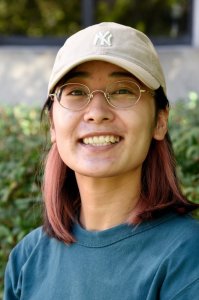Presented By: Earth and Environmental Sciences
Yang Li Dissertation Defense
Advancing Urban Seismic Imaging and Monitoring Using Distributed Acoustic Sensing

Seismic hazards present significant risks to urban areas, especially those built on soft sediments that amplify ground motion. Accurate assessment and mitigation of these risks require dense, high-resolution imaging and continuous monitoring of the shallow subsurface. However, conventional seismic networks are often limited in urban settings due to high costs, sparse coverage, and logistical constraints. These limitations hinder our ability to characterize site effects, monitor subsurface changes, and develop effective mitigation strategies. Distributed Acoustic Sensing (DAS) has emerged as a transformative solution, repurposing existing fiber-optic telecom cables into dense arrays of seismic sensors. DAS enables scalable, cost-effective, and non-invasive seismic data acquisition with meter-scale spatial resolution, making it well-suited for dense urban environments. Despite its potential, DAS presents distinct challenges for urban seismic applications. Because telecom cables are not designed with geophysical monitoring in mind, researchers often lack detailed information about the fiber layout, coupling conditions, and burial depth. These unknowns can degrade data quality and introduce uncertainty in the spatial accuracy of seismic measurements. Additionally, DAS generally exhibits lower signal-to-noise ratios compared to traditional geophones, particularly in noisy urban settings. Another fundamental limitation is DAS’s directional sensitivity: DAS measures axial strain along fiber, making it less responsive to seismic waves arriving at angles not aligned with the fiber, which can result in incomplete wavefield capture. This thesis addresses these challenges through three targeted investigations aimed at enhancing the utility of DAS for urban seismic imaging and monitoring. These investigations bridge the gap between theoretical DAS capabilities and practical urban applications, offering a framework for using telecom fiber networks as long-term, distributed seismic observatories in cities.
In Chapter 2, we investigate the shallow shear-wave velocity (Vs) structure of Granada, Spain, a region of moderate seismicity but high hazard due to shallow soft sediments amplifying ground motion. Using a two-day DAS deployment (August 26-27, 2020) along a telecom fiber with complex geometry, we address challenges such as urban noise and limited recording duration. An ad-hoc processing scheme incorporating frequency-wavenumber filtering enhances virtual shot gathers and multi-mode dispersion images from ambient seismic noise interferometry. We are able to employ this dataset to generate several Vs profiles for different sections of the cable. The resulting Vs profiles show a shallow low-velocity layer (150-300 m/s) corresponding to alluvial deposits, transitioning to weathered metamorphic bedrock (>800 m/s) at depth. These profiles align with local geological conditions, demonstrating DAS’s capability for soil characterization and seismic microzonation in urban areas.
In Chapter 3, we examine the near-surface Vs structure in the hill zone of Mexico City through a joint inversion of Rayleigh and Love wave dispersion curves extracted from DAS ambient noise data. We first perform angular response analysis to identify channel pairs with optimal sensitivity to both Rayleigh and Love waves. We then extract phase and group velocity dispersion curves using DAS recorded ambient seismic noise, and jointly invert them using a Markov Chain Monte Carlo framework to constrain Vs structure to 300 m depth. Notably, the joint inversion approach enhances the resolution of subsurface interfaces around 25-m depth, which are poorly resolved in inversions using Rayleigh or Love waves only. Rayleigh and Love wave dispersion data contribute complementary sensitivity to the model: Love waves constrain the shallow structure (0-100 m), while Rayleigh waves provide information on deeper layers (up to ∼300 m). This combined sensitivity results in a more robust and stable velocity model. Our results demonstrate the potential of DAS-enabled joint inversion in capturing fine-scale subsurface structure, particularly in complex urban environments with challenging wavefield conditions.
In Chapter 2, we investigate the shallow shear-wave velocity (Vs) structure of Granada, Spain, a region of moderate seismicity but high hazard due to shallow soft sediments amplifying ground motion. Using a two-day DAS deployment (August 26-27, 2020) along a telecom fiber with complex geometry, we address challenges such as urban noise and limited recording duration. An ad-hoc processing scheme incorporating frequency-wavenumber filtering enhances virtual shot gathers and multi-mode dispersion images from ambient seismic noise interferometry. We are able to employ this dataset to generate several Vs profiles for different sections of the cable. The resulting Vs profiles show a shallow low-velocity layer (150-300 m/s) corresponding to alluvial deposits, transitioning to weathered metamorphic bedrock (>800 m/s) at depth. These profiles align with local geological conditions, demonstrating DAS’s capability for soil characterization and seismic microzonation in urban areas.
In Chapter 3, we examine the near-surface Vs structure in the hill zone of Mexico City through a joint inversion of Rayleigh and Love wave dispersion curves extracted from DAS ambient noise data. We first perform angular response analysis to identify channel pairs with optimal sensitivity to both Rayleigh and Love waves. We then extract phase and group velocity dispersion curves using DAS recorded ambient seismic noise, and jointly invert them using a Markov Chain Monte Carlo framework to constrain Vs structure to 300 m depth. Notably, the joint inversion approach enhances the resolution of subsurface interfaces around 25-m depth, which are poorly resolved in inversions using Rayleigh or Love waves only. Rayleigh and Love wave dispersion data contribute complementary sensitivity to the model: Love waves constrain the shallow structure (0-100 m), while Rayleigh waves provide information on deeper layers (up to ∼300 m). This combined sensitivity results in a more robust and stable velocity model. Our results demonstrate the potential of DAS-enabled joint inversion in capturing fine-scale subsurface structure, particularly in complex urban environments with challenging wavefield conditions.